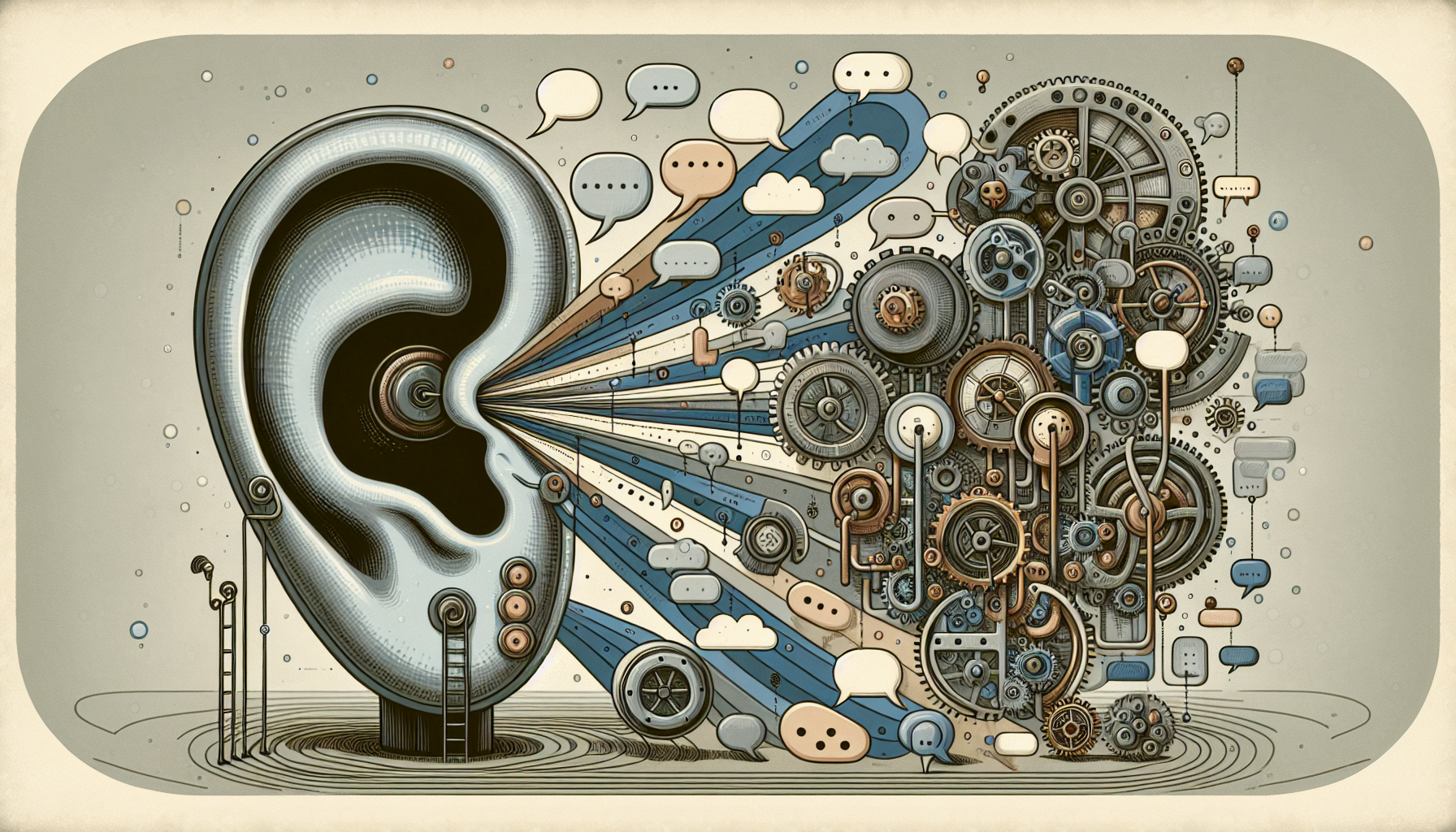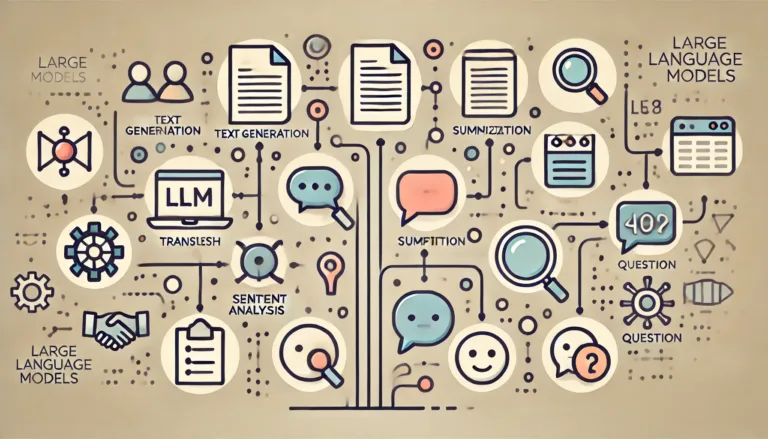Getting the Hang of NLP: The Basics
Starting with natural language processing (NLP) is like unlocking the secrets of human and computer communication. Here, I’ll explain how NLP fits into artificial intelligence (AI) and look at the different ways it’s put to use.
What’s the Big Deal with NLP in AI?
Imagine teaching a computer to chat like a human; that’s exactly what NLP does. It’s a part of AI that helps machines understand, interpret, and even create human language. NLP can be split into two main areas:
- Natural Language Understanding (NLU): This bit is all about teaching machines to get the meaning of text (DeepLearning.AI).
- Natural Language Generation (NLG): Here, machines learn to generate human-like text.
NLP is a key player in making gadgets like Alexa or Siri chatty and smart. Voice assistants and chatbots rely on NLP to figure out what you’re saying and respond appropriately. To get the hang of NLP, it’s important to see how it fits into the world of artificial intelligence programming.
Ways to Do NLP
There are different ways to approach NLP, each with its perks and challenges. Here are three big ones:
- Rules-Based NLP: This old-school method uses set grammatical rules and language structures. It’s super accurate but a bit of a hassle because it needs a lot of manual setup and struggles with varied language inputs.
- Statistical NLP: This method uses mathematical models to look at big chunks of text and find patterns. It’s more flexible than rules-based approaches but needs lots of labeled data to work well.
- Deep Learning NLP: The new kid on the block uses neural networks to handle tons of raw data. These models can learn complex patterns and are great for things like sentiment analysis and machine translation (IBM). They often train on large datasets like Wikipedia to get better at understanding language over time (DeepLearning.AI).
| Approach | How It Works | Perks | Challenges |
|---|---|---|---|
| Rules-Based NLP | Uses set rules | High accuracy | Needs lots of manual effort, not very flexible |
| Statistical NLP | Analyzes big data | Flexible, can spot patterns | Needs tons of labeled data |
| Deep Learning NLP | Neural networks | Super accurate, adaptable | Computationally heavy |
Understanding these methods helps you see how they all come together to push NLP forward. To dive deeper, check out resources on machine learning basics and using AI in Python for some hands-on learning.
In my own experience, digging into NLP has been eye-opening. It really shows how NLP can make AI systems more human-like, enhancing interactions in many fields. Whether it’s automated customer service or building smart virtual assistants, the potential of NLP keeps growing.
Implementing NLP in Python
NLP Tools in Python
When chipping away at natural language processing with Python, certain tools come in clutch. Python’s lineup is stacked with libraries that make NLP less of a headache. Here’s my favorite toolkit:
- Natural Language Toolkit (NLTK): A jack-of-all-trades library for working with human language data.
- spaCy: If you need speed and strength, spaCy’s your friend.
- TextBlob: User-friendly, built on NLTK and Pattern. It’s like the training wheels for NLP.
| Tool | Key Features | Best For |
|---|---|---|
| NLTK | Tokenization, stemming, POS tagging, parsing | Learning, research |
| spaCy | Named Entity Recognition (NER), dependency parsing, word vectors | Real-world apps |
| TextBlob | Sentiment analysis, noun phrase extraction, translation | Starters, small projects |
Want to dig deeper into Python and AI? Hit up AI in Python.
NLTK Features and Capabilities
The Natural Language Toolkit (NLTK) is my trusty sidekick for NLP tasks. Open-source and loaded with resources, it’s a lifesaver for building language programs. IBM backs it as well. Here’s what you get with NLTK:
- Tokenization: Breaks text into bite-sized chunks, like words or sentences.
- Stemming and Lemmatization: Strips words down to their roots.
- POS Tagging: Pins a part of speech tag on each word.
- Parsing: Cracks open the grammar of sentences.
- Semantic Reasoning: Grabs the meaning and context.
| Feature | What It Does | Example Function |
|---|---|---|
| Tokenization | Splits text into tokens | nltk.word_tokenize |
| Stemming | Reduces words to roots | nltk.PorterStemmer |
| POS Tagging | Tags parts of speech | nltk.pos_tag |
| Parsing | Analyzes sentence structure | nltk.ChartParser |
| Semantic Reasoning | Grabs meaning and context | nltk.wsd.lesk |
I often team up tokenization and stemming to get text ready for analysis. It’s a one-two punch for tasks like text classification and sentiment analysis (GeeksforGeeks).
From slaying text classification to busting spam, NLTK’s got the chops for both research and real-world use (DeepLearning.AI). It’s a Swiss Army knife for NLP projects, fitting well with everything from study projects to full-scale apps.
Wanna boost your AI programming skills? Check out artificial intelligence programming and AI software development.
Applications of NLP: Making Tech Work for You
Dive into some cool ways Natural Language Processing (NLP) can shake up business and make your customers smile.
Making Business Smarter with NLP
NLP’s like the secret sauce for businesses wanting to amp up their game. Picture this: a tool that helps you sift through mountains of data, spotting hidden gems and patterns you didn’t even know existed. It’s like having a data detective on your team, no coffee needed. IBM says it’s the real deal, helping you build a treasure trove of info that’s just a quick query away.
Here’s how NLP helps:
- Automated Data Analysis: It’s your new trend spotter. Imagine predicting what’s hot in the market before it even happens.
- Employee Productivity: Bye-bye, boring tasks. Automating repetitive work means your team can focus on the cool stuff.
- Smart Decision-Making: Faster access to data means quicker, smarter business moves.
- Cost Savings: Less human error, smoother workflows—your wallet will thank you.
| What It Does | How NLP Helps | Why It’s Awesome |
|---|---|---|
| Automated Data Analysis | Finding hidden patterns | Smarter decisions |
| Employee Productivity | Automating tasks | Boosting efficiency |
| Smart Decision-Making | Quick data access | Strategic moves |
| Cost Savings | Streamlining workflows | Saving money |
Want more on NLP? Check out our AI programming page.
Jazzing Up Customer Interactions
NLP’s not just for business; it’s changing how we chat with customers. Think about those smooth-talking chatbots in retail or healthcare, powered by something like GPT-3. They’re not just good—they’re almost like having a real person on the other end.
With NLP, you can:
- Create Smart Chatbots: These bots are awake 24/7, ready to answer questions with a smile (virtually, of course).
- Personalize Experiences: Dive into user data to whip up personalized recommendations and services.
- Voice-Activated Helpers: Alexa and Siri? They get you, thanks to NLP.
| What It Does | How NLP Helps | Why It’s Awesome |
|---|---|---|
| Smart Chatbots | 24/7 customer service | Quick help anytime |
| Personalized Experiences | Tailored suggestions | Customer love |
| Voice-Activated Helpers | Understanding you | Easy interactions |
Curious about more? Visit our AI software development page.
NLP is just scratching the surface. It’s evolving fast, with new tricks to streamline your work and make customers happier. Interested in diving in? Check out our bits on AI in Python and machine learning basics.
Advanced NLP Techniques
Getting into the juicy bits of Natural Language Processing (NLP), I’ve ventured into the nitty-gritty of some advanced tricks of the trade. These fun tidbits, like deep learning and generative AI platforms, are flipping the script on how we handle text and language data.
Deep Learning in NLP
Deep learning has taken center stage in modern NLP, making the old-school methods look like they belong in a museum. From my own tinkering, I can tell you these models chew through mountains of data to get their mojo—thanks to artificial neural networks. By scouring content like Wikipedia, they grasp the nuance in language, and then you can tweak ’em for stuff like fact-checking or headline creation (DeepLearning.AI).
Here’s where deep learning struts its stuff:
- Question answering
- Text classification
- Chatbots
Take spam detection, for instance—Naive Bayes can do it, but deep learning cranks up the precision to hit the bullseye (DeepLearning.AI). One of the big guns in deep learning is the Transformer model. This bad boy uses attention mechanisms to juggle input sequences all at once, making things faster and slicker.
Check out how traditional ML stacks up against deep learning in NLP:
| Technique | Good Stuff | What It’s Good For |
|---|---|---|
| Traditional ML | Simple, Easy to Digest | Spam filtering, Code debugging |
| Deep Learning | Pinpoint Accuracy, Big Data Handling | Virtual Assistants, Mood Detection |
Generative AI Platforms
Generative AI platforms bring the spice to advanced NLP. Heavy-hitters like IBM Watson NLP Library for Embed pack powerful tools to give your digital projects some serious NLP muscle (IBM). These platforms excel in a bunch of tasks:
- Spit out content from a simple prompt.
- Sort text into neat categories.
- Snag key bits of info from messy text.
These platforms flaunt pre-trained models that you can tweak for just what you need. No more sweating over training models from scratch—jumpstart your real-world applications in no time.
For those diving into AI software dev, these generative platforms are gold. They even offer AI certification programs to boost your credentials.
Getting the hang of these advanced techniques lets us dream big with NLP. Whether it’s deep learning or generative platforms, the adventure in AI programming is just heating up.
NLP in Everyday Life: Making Tech Feel Human
NLP: The Secret Sauce in Modern Gadgets
Ever wondered why your smartphone’s Siri feels like it gets you? All the magic happens because of NLP (Natural Language Processing). This tech house-ghost makes devices smart enough to understand our chatter and respond like they’re in on the joke.
NLP spices up a lot of the gadgets and apps we count on daily:
- Search Engines: They’re not just guessing what you’re after. NLP turns your half-baked queries into spot-on search results.
- Chatbots: Those AI customer service agents aren’t just shooting in the dark, they’re using NLP to get your drift and give answers that actually help.
- Digital Assistants: Siri, Alexa, Google Assistant—NLP is the brain behind their understanding of your every whim.
- Voice-controlled GPS: Ever told your car’s GPS you need the quickest route to pizza? Yep, that’s NLP steering you right.
| Gadget | Example | NLP’s Job |
|---|---|---|
| Search Engines | Figuring out what you mean, fast | |
| Chatbots | Service Bots | Keeping chats smooth and helpful |
| Digital Assistants | Siri, Alexa | Turning voice into action |
| GPS Navigators | Voice Commands | Listening to you, guiding you correctly |
NLP doesn’t just make our tech talk. It makes it listen, understand, and respond naturally. For a closer look into how AI spices up software, check out AI in Software.
How NLP Makes Life Easier
The impact of NLP is huge, from transforming businesses to making our day-to-day simpler and sweeter. It gets businesses humming and boosts how they connect with customers (IBM). Imagine scrolling through endless health records or trying to find help in a massive database—that’s a thing of the past with NLP.
Here’s how NLP rocks different areas:
- Healthcare: NLP helps make sense of electronic health records, even spotting health issues before they get serious.
- Retail: Those helpful suggestions and smart answers from service bots? That’s NLP making your shopping experience smoother.
In medicine and retail, from having chatbots answer your questions to complex data analysis, NLP has your back. GPT-3, for example, can whip up text that feels like a real person wrote it (DeepLearning.AI).
Want the lowdown on the basics of AI and machine learning? Check out AI Algorithms and Machine Learning Basics.
NLP isn’t just about flashy tech. It’s about making our interaction with gadgets and software feel less like talking to a wall and more like chatting with a buddy. For developers, getting the hang of NLP means not just writing code, but creating tech people love to use. So, jump in!
Tackling NLP Challenges
Natural Language Processing (NLP) is amazing, but it ain’t perfect. It’s got its own set of hurdles like biases, misinterpretations, and making sure stuff is accurate.
Biases and Misinterpretations
NLP can get tripped up by biases and misunderstandings. These models aren’t foolproof and can sometimes come out swinging with weird results, misinterpreting slang, or failing to grasp the right tone.
Sources of Biases
- Training Data: The data used to train models can bake in biases, leading to twisted results. Like, if you train a model on text from just one group of people, it might not work well for others.
- Dialect and Slang: The models can trip over regional dialects, slang, or sarcasm, spitting out stuff that’s way off the mark.
Real-Life Example
Check out this: a sentiment analysis model looking at social media posts. If it’s mostly trained on middle-aged folks’ posts, it might completely miss the boat on what younger folks are saying, throwing off sentiment scores.
| Challenge | Description | Impact |
|---|---|---|
| Biased Training Data | Model echoes data biases | Twisted and unfair results |
| Dialect and Slang | Bungled regional language | Off-base sentiment analysis |
| Tone of Voice | Missing contextual clues | Misreading user intent |
Need more info on handling biases? Check out our AI algorithms guide.
Getting NLP Spot-On
Getting these models to be spot on takes work. But there’re ways to make ’em sharper.
Strategies for Accuracy
- Preprocessing Techniques: Before a model can really work its magic, it needs clean data. Tokenization, removing stop words, and using TF-IDF can make the input data way easier for the model to digest and understand.
- Advanced Modeling Approaches: Deep learning is killing it right now. Models using massive amounts of raw data are hitting better accuracy. Pre-trained models like BERT are also stepping up the game.
Practical Implementation
Imagine you’re working on spam detection. Simple machine learning techniques like Naive Bayes can get the job done. But if you’re aiming for something trickier like automated customer service, deep learning models might be your best bet.
| Technique | Example Task | Type of Model |
|---|---|---|
| Tokenization | Text Preprocessing | Traditional ML |
| TF-IDF | Text Classification | Traditional ML |
| Naive Bayes | Spam Detection | Traditional ML |
| Deep Learning Models | Language Translation | Neural Networks |
| Pre-trained Models | Customer Service | Deep Learning |
For devs getting into AI in Python, these tricks can take your model’s accuracy to another level.
Nail these challenges and use these strategies to create NLP models that really hit the mark. Dive into our articles on machine learning basics and coding languages for AI for more juicy details.









